Pine St squatters keep growing; but who are they really?
Lara Leahy
07 October 2024, 8:00 PM
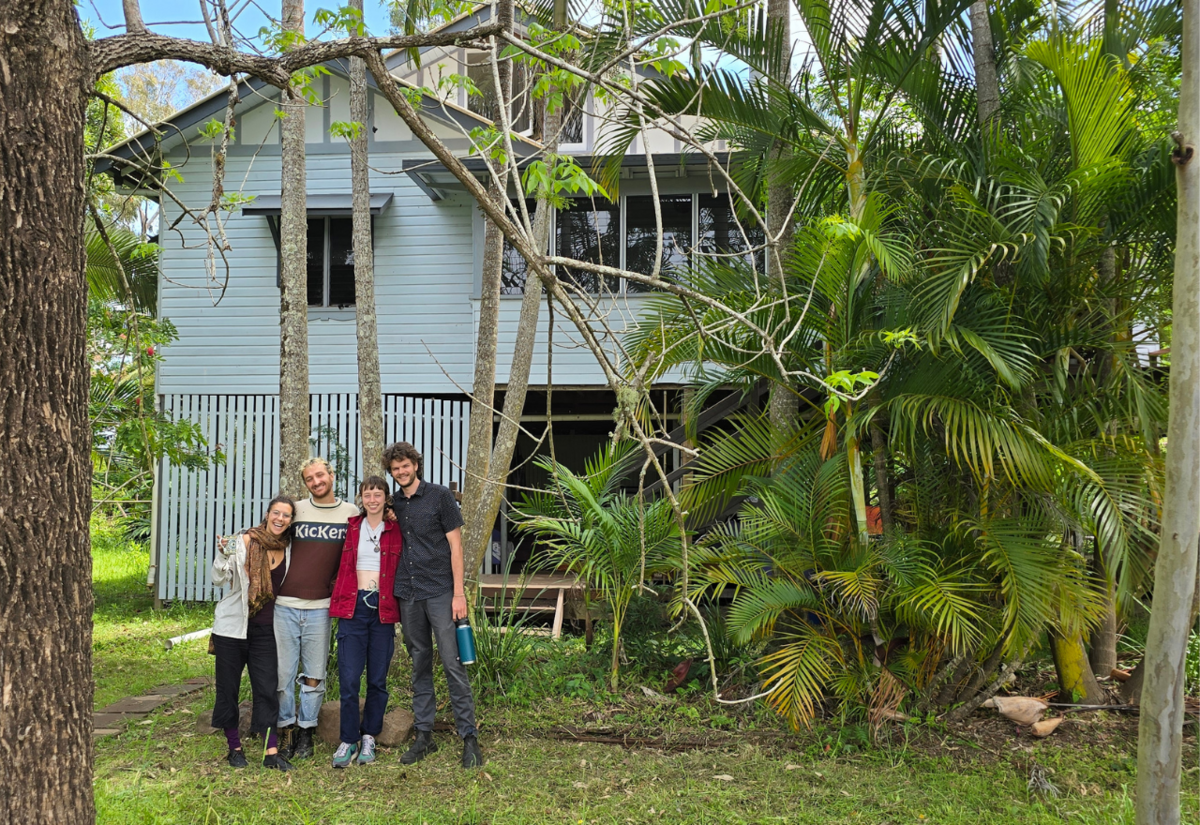 Stella, Daniele, Emma and Rio out the front of Main House. They want a chance to share their story and their ethos.
Stella, Daniele, Emma and Rio out the front of Main House. They want a chance to share their story and their ethos.The population of the north end of Pine Street is one, officially. However, a group of people, mainly young, some transient, all questioning the life we lead, has set up a temporary base camp illegally in the NSWRA (Reconstruction Authority) houses.
The squatters have been there for over a year and have grown in number. One local North Lismore business has said he observes 20 cars or more at times down Pine Street.
Formal interference from the NSWRA and police has done little to change the situation, so the Lismore App investigated the situation a little further to better understand life from the squatter's point of view.
Upon our visit, there were a group of around ten people who are currently calling seven houses in the area home. They are the regulars, but up to a total of 25 or 30 people can be comfortably accommodated in the houses.
This core group includes people from Lismore who have found it hard to find and afford rental accommodation, travellers who are staying for a while as they enjoy their time in the area and one person from Israel who cannot return home and is hoping to get refugee status.
Roisin, a woman who moved to the area over five years ago from Melbourne, explains how she came to be a Pine Street resident - one of the first to the Pine Street squat.
“Lismore, post-flood was really upsetting. Heartbreaking. Exhausting. It really challenged people's connection to possession, connection to place, connection to safety.”
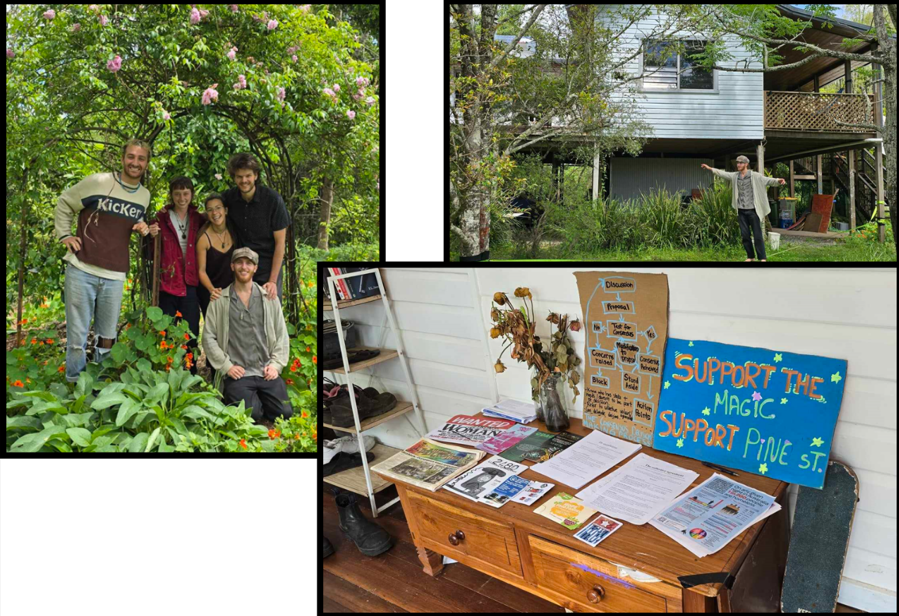
Witnessing the aftermath of the flood took its toll on Roisin, as it did with many people. Questioning the "norm" and how things were done, and often badly, has affected the Pine Street occupant's perspective on what is acceptable and what is not. So they are doing what they believe is right, and look at empty housing as a waste of vital resources, especially when so many are finding it hard to get a place to live.
After living and working on farms where drought, fires and floods affected her ability to continue work, Roisin moved to Lismore. "I moved to Lismore over a year ago into my friend's place that she bought after the flood. She wanted to create something to offer Lismore’s culture and art. She believed in Lismore and wanted to keep seeing it grow.
“She invited me to come and stay. I fell in love with Lismore.”
Roisin found herself in a situation of wanting to stay in Lismore. But the ability to stay with her friend was no longer an option. There was an empty house (buyback) adjacent to her friend's place, so she stayed there for a while.
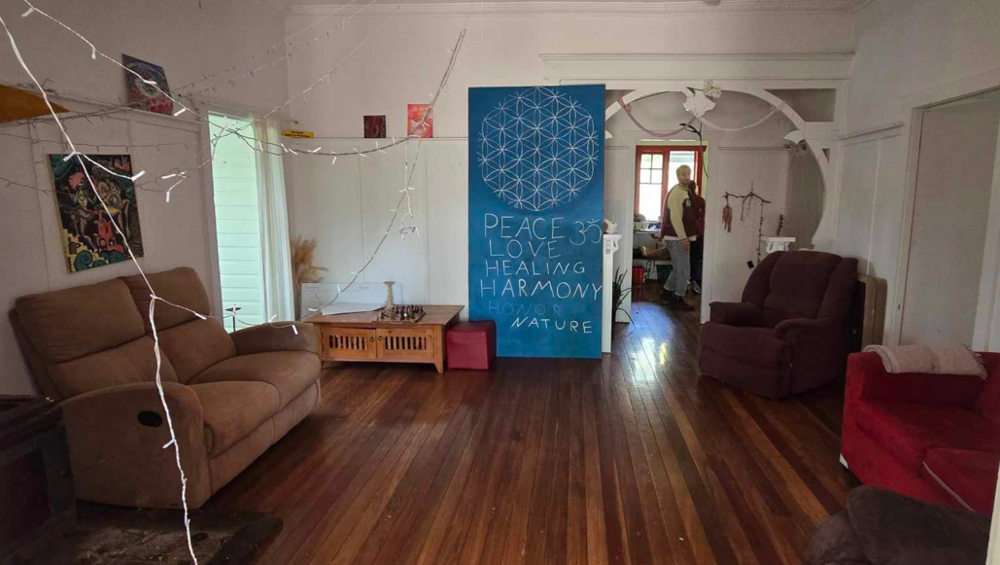
(Inside main house)
“It's very difficult to find a house. It can be unaffordable or take you far away. And so there was an empty house behind her house, so I'm just gonna go put myself in a shelter.
“I need somewhere to live. I can't afford to rent right now. And yeah, that was a bit stressful for some time, but it just made sense to utilise these empty houses. And then slowly, it made sense to more people.”
Many of the people in Pine Street feel the government has failed them somehow, and at this particular time. What they can do is look after the piece of land that they have located themselves on and look after each other now that a community has developed.
“Other people fell in love with it, and we decided that we wanted to take care of each other, take care of the landscape and take care of these houses until we know that something better is going to be done with them.
“We have to find ways to collaborate because we're sharing the land equally. It's autonomous. There's no one person saying this is how it's going to be. And so we're practising our morals and our values without being oppressed by a higher opinion.”
During our visit, it was clean-up day, where everyone pitched in and took care of chores and caring for the place.
Knowledge of the Pine Street squat is spread by word of mouth. Anyone is welcome to come and visit, and if there is space, stay. There are no rules as such. Instead, there is an expectation of respect for the way things have been arranged and to follow suit.
They have a kitty, which people contribute to when they stay to take care of certain expenses.
One of the seven houses is not for staying in, but has two dedicated areas - a creative space and an area for political debate. Meetings are held there regularly.
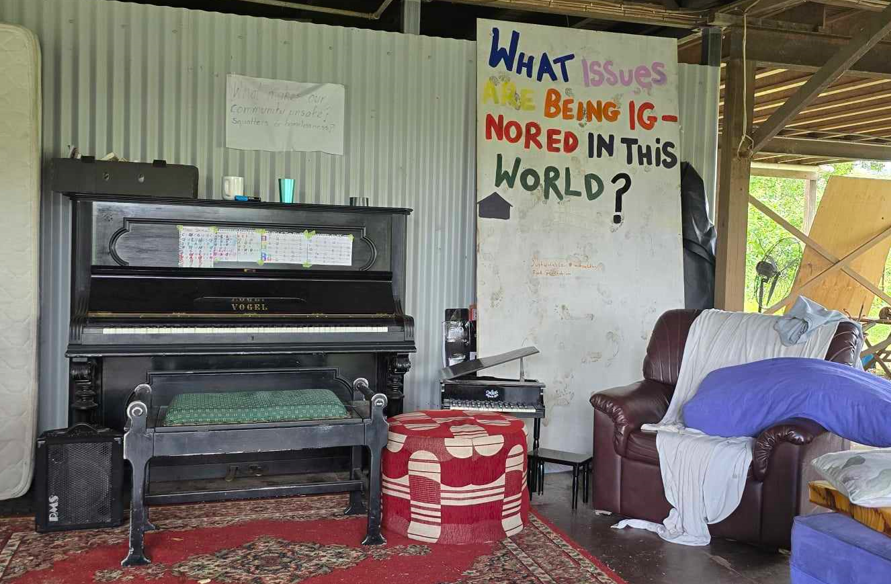
(The spaces created around the main house have a vibe that you would have found decades ago in Byron Bay)
“We have established something,” says Roisin, “And so we are getting people coming in who are locals, who are mothers, who can't afford rent, or don't want to be moved to a different suburb, needing a place to stay, or traditional renting doesn't suit them anymore, or they just can't do it.”
Daniele, an Italian traveller, speaks of what he has found, “I’ve felt so lonely and unsafe in different moments of my life. What I didn't have - I was struggling with my rent, I was struggling with food bills. Personally, in terms of safety, I have never felt safe like now here in this community. Everyone supports each other.”
Originally, Roisin wanted legitimacy when she decided to move to the Pine Street area. She emailed the RA, “When we first came, we wanted to be legit and create an agreement, so as part of our original proposal, it stated that we would be willing to pay for whatever it is that we use, whatever the rates are, that kind of thing.
“I still want to stand by that for myself. It's a written agreement that shows why we're here. We're aware of it being flood-prone, and we will take care of ourselves. They have no responsibility for our lives.”
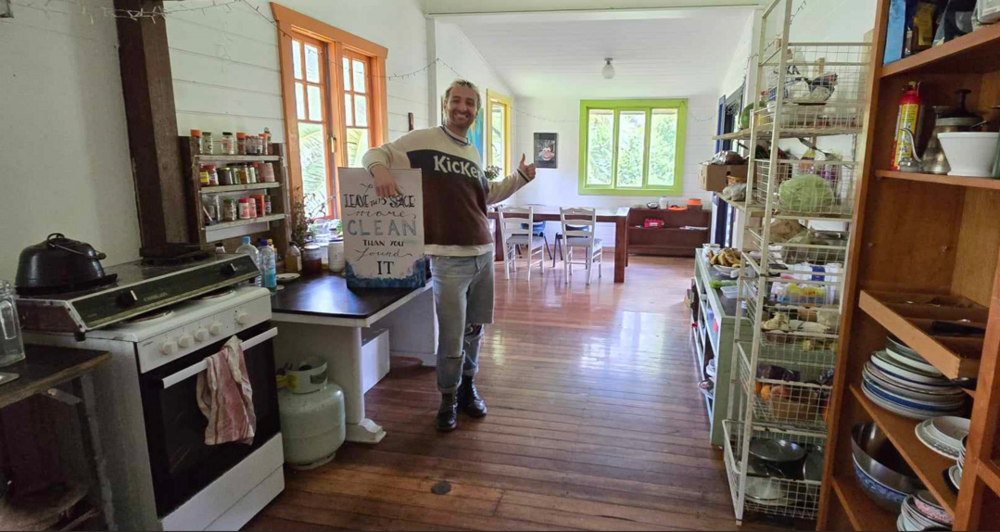
(The kitchen in the main house)
They never heard back from that communication but the RA have been down to Pine Street and offered them alternative accommodation. However, it was very temporary and involved going on wait lists that squatters believe are already stretched.
A spokesperson for the NSW Reconstruction Authority (RA) said, “The RA is leading the Resilient Homes Program, which has involved offers and acceptance of buybacks for a large number of homes on the basis they were directly impacted or pose the greatest risk to life in most floods.
“The RA has been working with Homes NSW, Social Futures, NSW Police and squatters to find alternative accommodation, with some squatters moving voluntarily.
“The unauthorised use of the properties without services, provides an unacceptable risk to the health and safety of those persons, including an increased risk from fire and sanitation issues as well as the impact of mould.
“As part of the buyback process, services including power and water were disconnected and fencing erected at each premises to prevent unauthorised persons from entering the houses to reduce the risk of injury.
“The RA is also working with NSW Police and within the appropriate legislation to have squatters removed where they do not leave voluntarily.”
The squatters confirmed that the houses had power and water cut off when they became part of the buyback scheme.
“As part of the buyback scheme, the government does significant damage to the houses, and part of that is cutting off services that water and sewage are easy to reconnect yourself. The electricity, not so much. So they all have no electricity, but some have some solar systems for either hot water or for charging stuff.”

(The squatters arranged for garbage collection by asking nicely)
Speaking about the flood risk, the inhabitants have plans and enacted them when the waters were rising two weeks ago. At a certain point, all vehicles were taken out of the risk area, and people had to take responsibility for their belongings. They know where the higher ground is.
“We've had a lot of support from neighbours, people who still live there, who've been here for ages to help us be flood prepared. Someone dropped off a boat for us.”
The one house on the street that has a legal owner is owned by Paul. Obviously, he is very flood-aware.
Paul has worked with his new neighbours to ensure their safety. The squatters have been helpful to Paul, assisting him prepare when the waters were rising.
Paul was offered a buyback but didn’t want to accept it, “It’s my property here, I have trees and everything I need here, so I’m not leaving!”
Paul said it did feel a little isolated when neighbours who accepted buybacks moved out, “It's a bit lonely. I mean, you know, it's not just around me here on this street, but the whole of North Lismore is mostly gone.
“My new neighbours, they're all really lovely people. Some of the nicest neighbours I've ever had.” Paul was working on a car with a couple of the squatters.
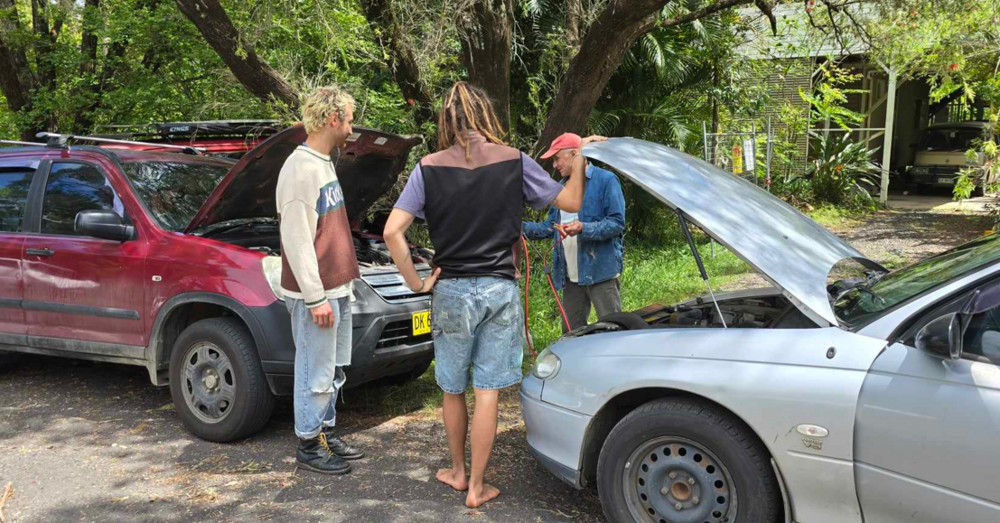
(Paul working with a couple of his new neighbours)
They exchange more than help and pleasantries; Paul allows them to use some of his power, and they top up the excess amount on his power bill using the contributions.
The first house that was inhabited is called “Main House”. It is the last house on Pine Street to the left. It is the place where people meet up and first come to when they arrive. A kind of reception.
The squatters know their situation is temporary. Roisin, Ben, Emma, Daniele, Rio, Stella and others wish to extend an invitation to anyone curious to see what is happening in Pine Street to visit. Depending on your point of view, that may not be for everyone.
FLORISTS
LIBRARIES & MUSEUMS

